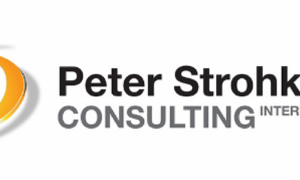
Why old-fashioned media still rocks in the Facebook age
Remember the days (or maybe you’ve only read about them) – before it was possible for anyone to be a reporter and photographer – when people found out what was going on by watching the news?
When I talk to university students about ‘the media’, they think I’m referring to Facebook. Their concept of media doesn’t stretch any further than that. With so much focus on social media, it’s easy to forget that traditional media outlets are still out there. Some of them might be doing it tough, but they are around.
There are still phenomenal opportunities for businesses and organisations to get positive media coverage, yet this is becoming a neglected element of the way we communicate. In the social media age, it’s even more important to actively promote yourself through the old-fashioned media.
Reputation today is everything; we’re operating in a reputation-driven economy. People don’t just need to know about you; they need to trust you, believe in you and be confident you have a solid reputation. Reputation – the collective impression of your organisation – is formed not just by what you say and do, and how others experience you. It’s largely formed by what others say to others behind your back – and today, or course, making those comments is simple, instant and far-reaching.
Getting positive stories about your business into the mainsteam media can help launch positive social media conversations. Great media coverage used to be important in its own right. Now, it’s the ripple effect through social media that gives traditional media coverage its true power. Think of the benefits this way:
Positioning: A positive media story positions you and your organisation as an industry leader. It provides a solid wash on your canvas to give extra lustre to your other marketing and communication efforts.
Credibility: It’s ironic that even though most people don’t trust journalists (and I say this with love as a former journalist myself), they tend to give more credence to a story that appears in the media than, say, similar information on your company website or Facebook page. That’s because, at some level, they know you or someone paid by you has written your marketing material, but the media story has come from an independent third party. Media coverage amplifies your message, and just the appearance of the story gives you credibility. (Of course, the story needs to be positive for that to be true.)
Reach: Even a small media story will have an impact; you’ll be surprised at how many people will see it. Many of these will be people outside your own social media or communication network.
Leverage: This one is the real kicker. Traditional media and social media can be a match made in heaven if you know how to work them well. Let’s say you successfully attract the interest of a media outlet in a story about your organisation. I need to stress at this point that you must have a genuine story to offer the media; don’t simply approach them expecting a free ad. There are particular elements a journalist looks for in determining whether a story is worthy of coverage, so make sure you’re clear on the rules of the game before you set out. But let’s assume you’ve got their interest, and a story has been lined up. This is a great opportunity for you to leverage that story and get additional promotion through your other channels.
Let me give you an example. I recently I worked with a business leader who wanted to increase the profile of his organisation. We identified a great story angle and were able to arrange for a local newspaper to do a story on an aspect of that business. The paper sent a photographer to take some photos and when they arrived, we also took photos of the photographer doing their thing.
We were then able to post photos of the photo shoot on social media with messages saying ‘look out for our story in next week’s paper’. We ran several different social media posts, creating anticipation about the story and letting customers and suppliers know to keep a look out. That in itself gave an excuse to put up some positive and interesting social media posts, rather than just general promotional information.
Then the story appeared in the paper, and it was a really positive, colourful piece about the business. We were able to do more social media posts about the story; we included a link to the online version on the paper’s website and also attached a clipping from the digital edition for people to download. We were able to stretch it out to three more social media posts.
In total, we came up with six social media posts – three before and three after – and the newspaper story itself. There were lots of ‘likes’, ‘shares’ and comments, which generated a positive conversation. The business’s message received a significant amount of amplification, and packed much more punch than just the media story alone.
Cumulative effect: Back when I was a reporter, I had my favourites. These were people who understand what I wanted in a story and respected my deadlines. They were able to come up with interesting angles, and didn’t waste my time expecting free ads.
Some were government managers, others were business owners or individuals. Over time, I developed a relationship with them and they were the first ones I called on a quiet news day or if I was looking for a comment on a story related to their sector. They became ‘media magnets’ who over the years achieved a large amount of free coverage.
Getting a positive story in the media – provided you know how to deal with it – can lead to great opportunities for even more coverage, and to long-lasting positive media relationships.
Some people shy away from the media because they’re worried about being misquoted or having the encounter turn into a negative story. There is some risk attached to any media interaction because it’s the journalist’s job to cover a story rather than simply promote what you have to say. However, if you understand how the game is played you’ll have maximum opportunity to get great media coverage, with all the benefits that will bring.
So, look beyond social media – and even better, use it to amplify your other promotional efforts, including traditional media. Old media isn’t a ‘has-been’; it’s still alive and well, and waiting for you to get on board.
Dr Neryl East is an authority on reputation, and how you and your team can stand out for the right reasons in today’s reputation-driven economy.
www.NerylEast.com
www.MediaSuccess.com.au



